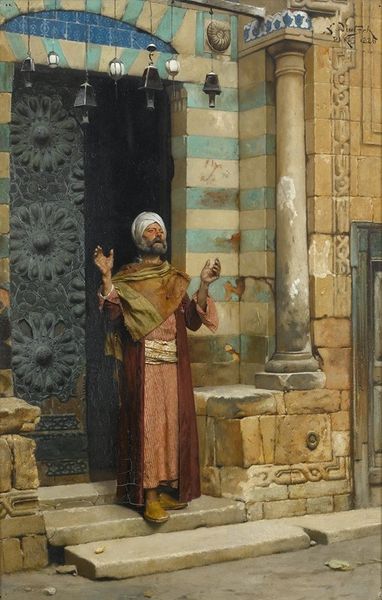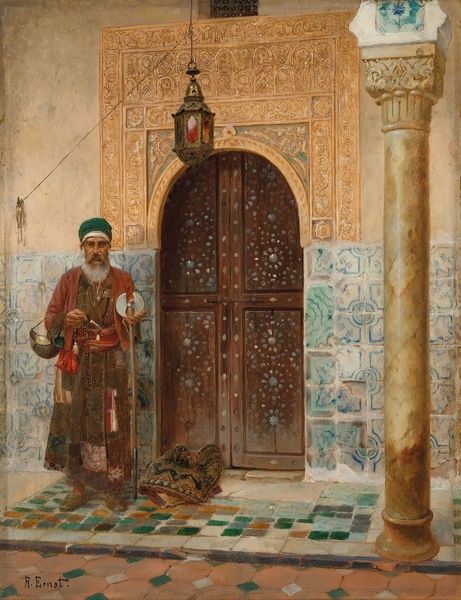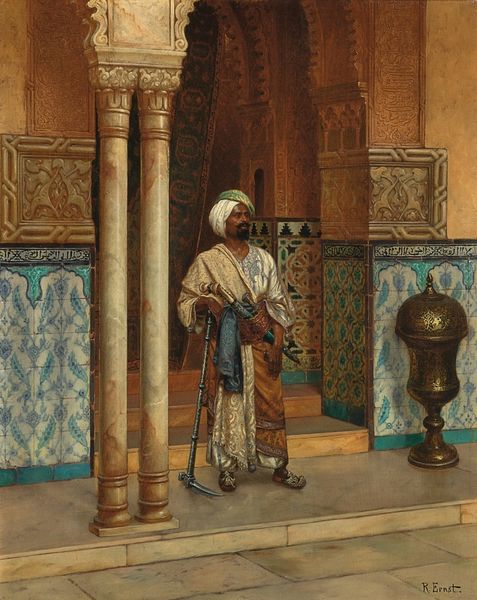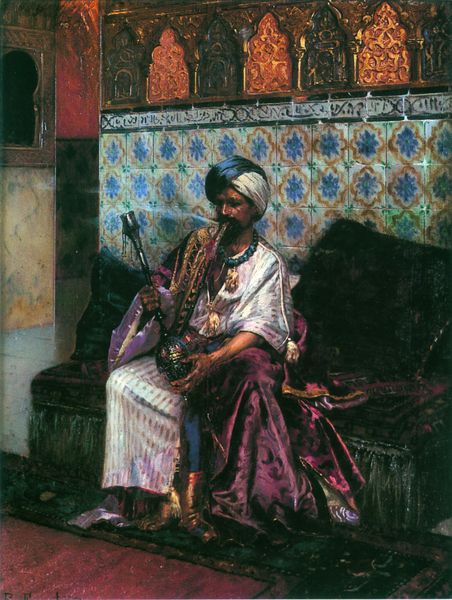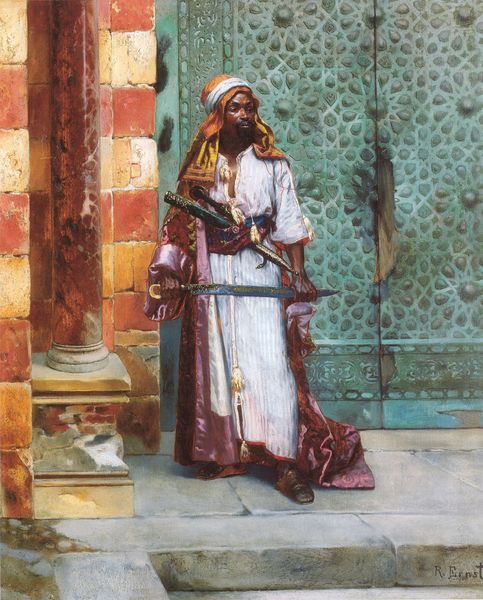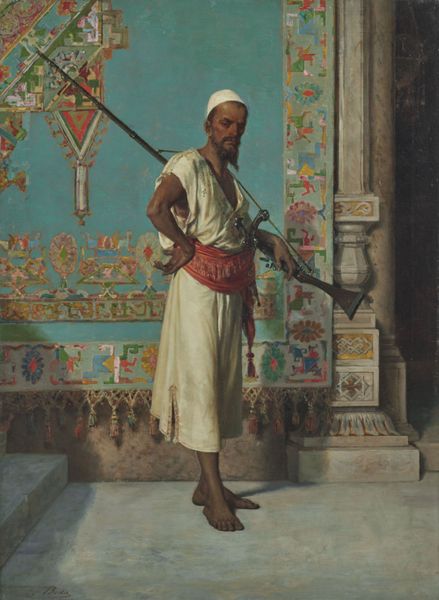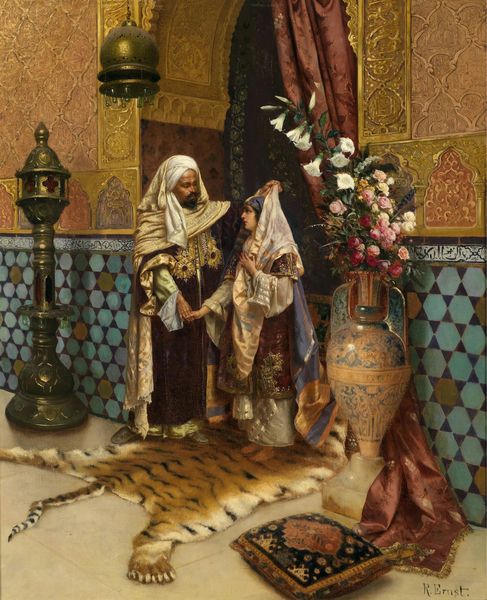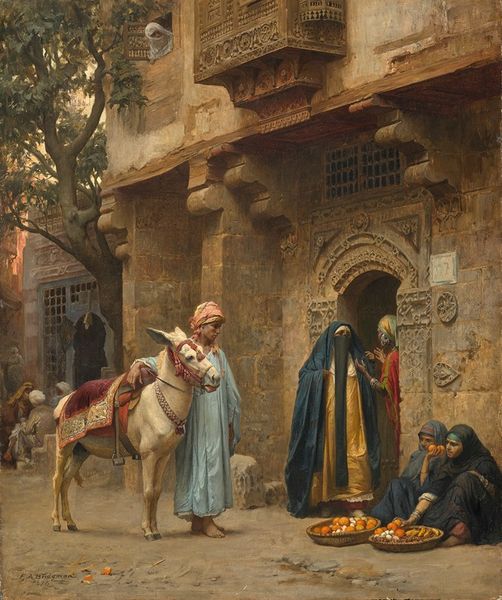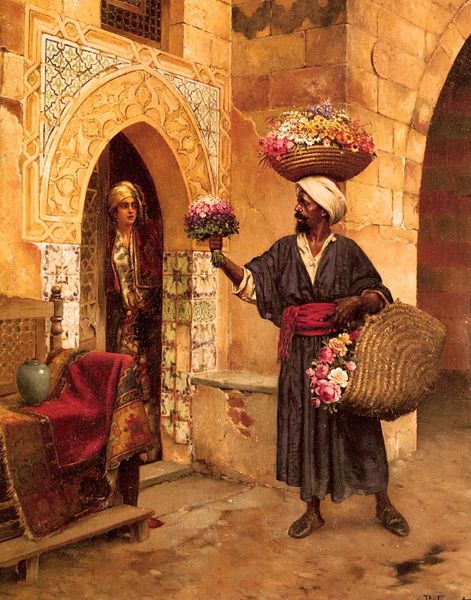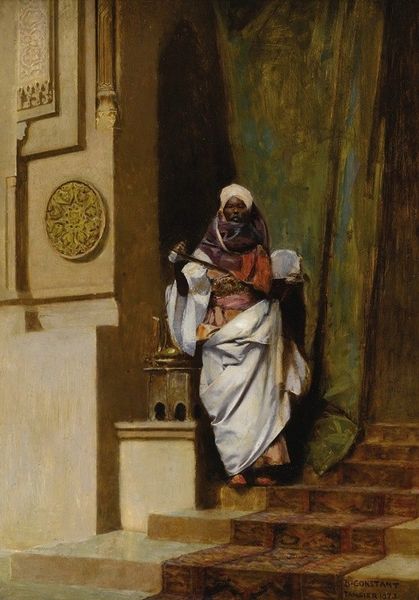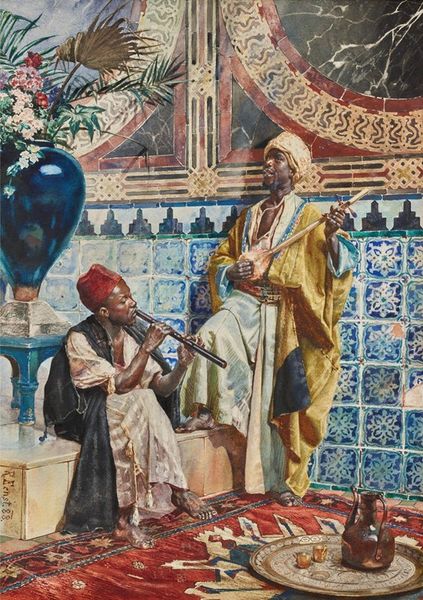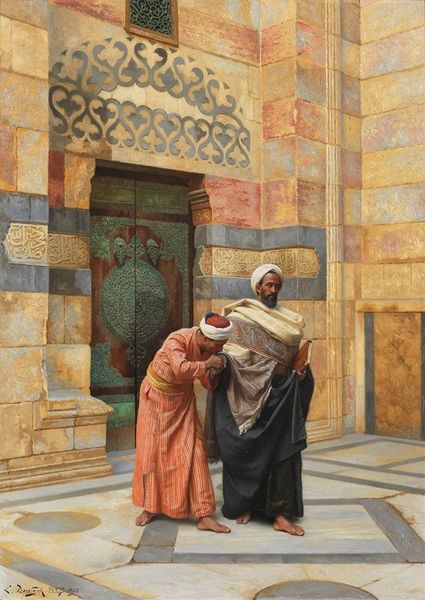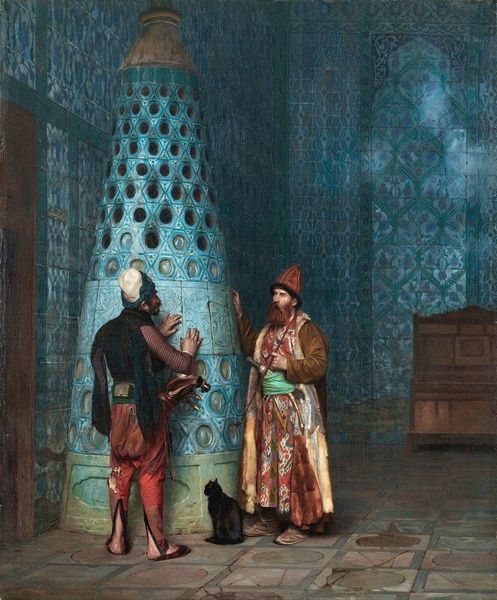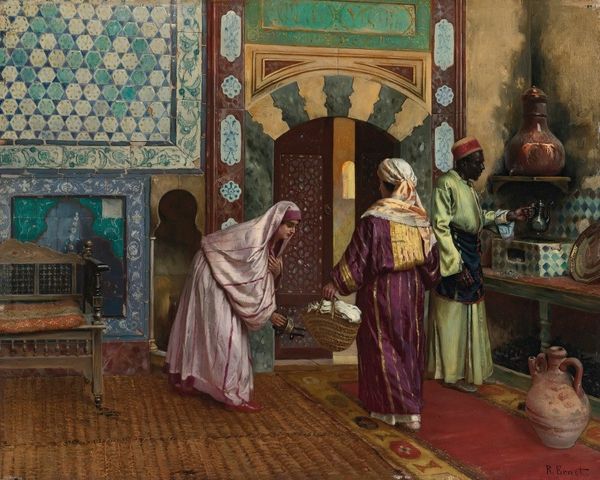
oil-paint
#
portrait
#
oil-paint
#
oil painting
#
romanticism
#
orientalism
#
genre-painting
#
realism
Copyright: Public domain
Editor: So, we're looking at "The Guard," an oil painting by Rudolf Ernst. It's listed without a specific date, but the style gives me the impression of something made in the late 19th century. I’m drawn to the intense gaze of the figure, and also the incredibly rendered tile work. What do you see when you look at this piece? Curator: Well, I immediately notice Ernst's material engagement with Orientalist fantasy. Look at the tiles you mentioned – their creation and transport were a result of specific trade networks and colonial power dynamics. Ernst replicates this effect with the careful brushstrokes that mimic tilework; this is a manufactured impression for consumption by the West, transforming a laborious craft into fine art. The materials used become a vehicle for projecting a fantasized “Orient,” one easily digested by a Western audience. Editor: That's a fascinating take. It highlights the economic systems that underwrite the scene's very construction. Does the subject himself then, become almost secondary? Curator: Not entirely secondary, but considered in relation to those systems. The guard, and his exoticised clothing and weapon, become commodities, too. Ernst has depicted them through a very specific lens, informed by a marketplace eager for these romantic portrayals. How do you think Ernst's choice of oil paint contributes to this overall effect? Editor: Good question. Oil paint lends itself to a high level of detail, almost photographic in some areas here. The richness and depth could intensify the impression of luxury and opulence that buyers would have expected. Curator: Exactly! So, when we consider it as a material object, "The Guard" becomes an artifact not just of artistic skill, but of a complex interplay of colonialism, trade, and artistic consumption. Editor: That really changes how I view this painting. Seeing the material history embedded within shifts the focus from just the surface representation to the bigger picture. Thank you. Curator: It's these connections between the materials, the means of production, and social contexts that enrich our understanding of art. Now let's see what’s next.
Comments
No comments
Be the first to comment and join the conversation on the ultimate creative platform.
